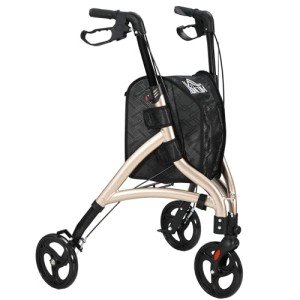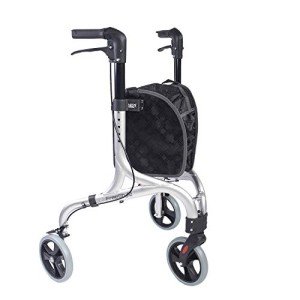Five Killer Quora Answers On Walker With Seat
The Benefits and Features of Walkers with Seats: A Comprehensive Guide
Mobility is an important part of maintaining self-reliance as people age or recover from injuries. Amongst the numerous mobility aids available, walkers have actually ended up being significantly popular for their adaptability and assistance. One specific type is the walker with a seat, which offers both support in walking and a resting location when needed. This short article checks out the functions, benefits, and considerations of walkers with seats, ultimately directing prospective users in choosing the ideal mobility aid.

What Is a Walker with Seat?
A walker with a seat is a mobility aid created for people who may need help while walking but also require the choice to rest regularly. These walkers usually come with four legs, sturdy deals with for grip, and an integrated seat that enables the user to take breaks as essential. The design of these devices differs, offering options that cater to different choices and needs.
Secret Features of Walkers with Seats
When considering a walker with a seat, numerous essential functions ought to be taken into consideration:
- Sturdy Construction: Most walkers are built from durable products such as aluminum or steel to guarantee support and safety.
- Adjustable Height: Many designs include adjustable deals with to accommodate users of various heights, guaranteeing proper posture and comfort.
- Lightweight Design: For simpler maneuverability, many walkers with seats are developed to be lightweight yet steady.
- Safety Features: Some come geared up with functions such as non-slip grips, locking brakes, and reflective strips for presence and safety.
- Storage Options: Walkers might consist of baskets or trays for carrying individual items, which can boost convenience during use.
Benefits of Using a Walker with Seat
The many advantages of a walker with a seat make it an excellent choice for numerous individuals:
-
Enhanced Mobility: A walker with a seat permits users to keep mobility while offering the required assistance to prevent falls.
-
Practical Resting Option: The built-in seat allows users to rest whenever they feel tired, promoting general endurance and comfort.
-
Improved Confidence: Individuals typically get more confidence in their mobility when utilizing a walker that supports them, causing higher self-reliance.
-
Posture Support: A well-designed walker motivates users to keep much better posture while walking, which can assist in decreasing back and joint pressure.
-
Social Interaction: A walker with a seat can encourage users to take part in social settings, as they can comfortably take breaks throughout activities.
Selecting the Right Walker with Seat
Picking the right walker with a seat involves considering different elements to ensure it fulfills the user’s needs. Here’s a checklist to assist in selecting the very best walker with seat:
Considerations for Selection
-
User’s Physical Condition: Assess the physical capabilities and limitations of the user. Are they able to handle their weight with the walker? Do they need more stability?
-
Weight Capacity: Ensure that the walker can support the user’s weight easily. The majority of walkers have particular weight limits.
-
Mobility: For those who plan to travel or move regularly, consider the weight and foldability of the walker.
-
User Preferences: Users might have particular choices concerning design, color, or extra features that deal with their way of life.
-
Spending plan: Walkers with seats can vary in cost based on materials and functions. It’s crucial to pick one that satisfies the required requirements without exceeding the spending plan.
Table: Comparison of Popular Walker with Seat Models
| Walker Model | Weight Capacity | Seat Height | Adjustable Handles | Rate Range | Additional Features |
|---|---|---|---|---|---|
| Rollator Walker 1 | 300 pounds | 22 inches | Yes | ₤ 100 – ₤ 150 | Basket, folding design |
| Rollator Walker 2 | 250 pounds | 21 inches | Yes | ₤ 80 – ₤ 120 | Padded seat, adjustable backrest |
| Rollator Walker 3 | 350 lbs | 23 inches | Yes | ₤ 150 – ₤ 200 | Locking brakes, rear wheels |
| Foldable Walker 1 | 300 lbs | 20 inches | Yes | ₤ 70 – ₤ 110 | Lightweight, easy storage |
Frequently Asked Questions (FAQs)
1. Can people use walkers with seats if they have restricted upper body strength?
Yes, walkers with seats are developed to provide support and stability for individuals with numerous strength levels. Choosing a model with sturdy handgrips and brakes can enhance safety.
2. Are walkers with seats ideal for outdoor use?
Definitely. The majority of walkers with seats are designed for both indoor and outdoor use. However, it is advisable to choose models with larger wheels for better maneuverability on outdoor terrains.
3. How do I keep a walker with a seat?
Routinely examine the rubber suggestions for wear, guarantee that all moving parts are operating correctly, and tidy the walker to avoid dirt buildup. If any parts are harmed, change them without delay.
4. How can I improve my walking capability while utilizing a walker with a seat?
Routine physical therapy and balance exercises can help enhance strength and coordination, helping in better mobility even when utilizing a walker.
5. Is it possible to change the height of walkers with seats?
A lot of modern walkers with seats include adjustable heights for the deals with to accommodate numerous user heights, guaranteeing comfort and correct posture.
Walkers with seats offer indispensable benefits for individuals looking for increased mobility and comfort. By understanding the features, benefits, and vital selection criteria, users and caregivers can make educated decisions relating to mobility aids. With the right walker, users can delight in enhanced independence and enhanced quality of life.



